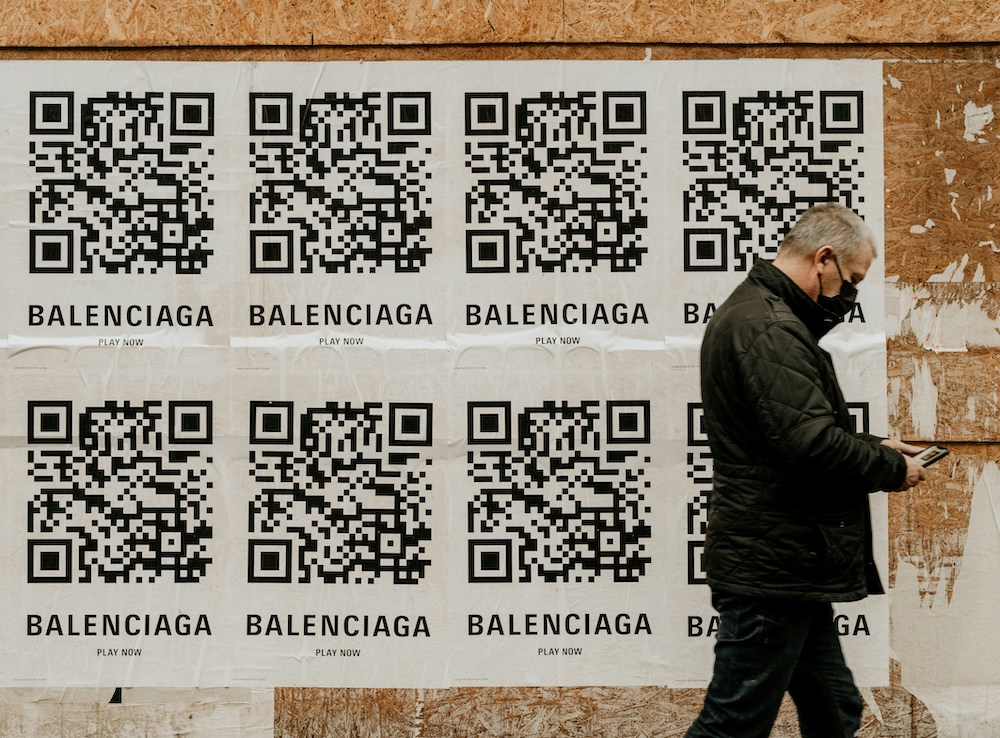A few months ago, we mentioned that, by 2027, all traditional UPC bar codes will be replaced by 2D barcodes. That means that the zebra-striped strip you’re used to seeing on virtually every product will be replaced by the square-shaped code you’ve probably seen on menus during the Covid-19 pandemic. Since 2D barcodes can store more information, this shift opens up some huge opportunities for both businesses and customers. Below are just a few key benefits of 2D barcodes you can expect to experience in the next few years.
Better inventory management
The greatest benefit of 2D barcodes is that they can store far more information than traditional codes can. That makes them ideal for use in inventory management, because there is no longer any need for the searcher to manually browse a database for needed information.
For example, let’s say that you want to know how many blue shirts you still have in stock. Traditionally, you would scan a barcode to discover the item’s product number. Then, you’d look up that number, and all information pertaining to it, on a spreadsheet. With a 2D barcode, all you will have to do is scan the tag, and you will instantly be able to see when an item was delivered, how much it costs, and how many of it are in stock. Not only is this process more efficient, it also reduces potential for human error. This results in more accurate inventory management, as well.
Since 2D barcodes reduce the need for a separate inventory spreadsheet or software, it also means business owners and employees don’t have to spend as much time entering data into spreadsheets, either. So, the business owner saves time both at the beginning and end of the sales process.
More diverse marketing opportunities
Since 2D barcodes can store so much more information than 1D codes, they can be used to unlock a host of marketing opportunities. For example, consumers could scan a 2D barcode to find:
- A tutorial video demonstrating how to set up and use the item.
- A recipe booklet full of recipe ideas and tips.
- An online community of other buyers who have purchased the item.
- A sign-up sheet for a loyalty program or email list.
- A contest, raffle drawing, or other promotion
Though most businesses will probably use their 2D code space to direct consumers to their website Home pages, the opportunities are much broader than that—and we hope that some of the more creative players will take advantage of them! Since today’s consumers are inundated with advertisements, more unique marketing approaches will help businesses cut through the noise and boost sales, while making a more interesting buying experience for their clients, too.
Greater information access for buyers
The first two advantages we’ve discussed largely benefit businesses and sellers. However, 2D barcodes also stand to help consumers, by allowing them to more easily access information about the products they buy. With 2D barcodes, consumers can instantly gain information such as:
- A food item’s complete list of ingredients, and their places of origin.
- A company’s sustainability efforts, awards, and certifications.
- A company’s stance on human rights, corporate equity, and inclusion.
Being able to access this information quickly will help consumers choose businesses which support their values over those that don’t. This might help encourage businesses to adopt more sustainable and equitable business practices. In other words—no one likes change. But 2D barcodes might be a powerful force for good.
While we’re in the vein of sustainability, 2D barcodes might also help reduce consumer waste, particularly food waste. These codes make it easier for retailers to identify which products are approaching their expiration date, and to apply automatic markdowns for them. This helps the products sell quickly and reduces the chance that the retailer will have to throw them out.
How do I switch my business to 2D barcodes?
If you’ve just learned about the upcoming transition to 2D barcodes, relax—you still have plenty of time. Since GS1, the organization which regulates product packaging codes, has set its rollout date for 2027, business owners have three more years to adapt.
The first thing you will want to do is learn where your system is, currently. In other words, you will have to learn whether or not your current POS system is capable of scanning and storing 2D barcodes. If you are unsure, you can use GS1’s Barcode Capabilities Test to find out.
Once you’ve learned what your system needs, you can create your own adaptation timeline. Be sure to implement a solution sooner rather than later, though. That way, you can test and refine it before it’s introduced to your customers. Once you start converting to 2D codes, you’ll be joining a large group of business owners who have already done so. According to GS1, the new technology is already being tested in 48 countries across the world, representing 88% of the world’s GDP.
Need more help? Call SSI Packaging!
If you have more questions about the benefits of 2D barcodes, we can help! As a small, family-owned marking and coding company, we are always happy to assist other business owners. Our vast product catalog can also provide you with anything you need to pack, track, or ship your products. Thanks for taking the time to read this article, and be sure to check out our blog for more information pertaining to marking, coding, packaging, and more.

